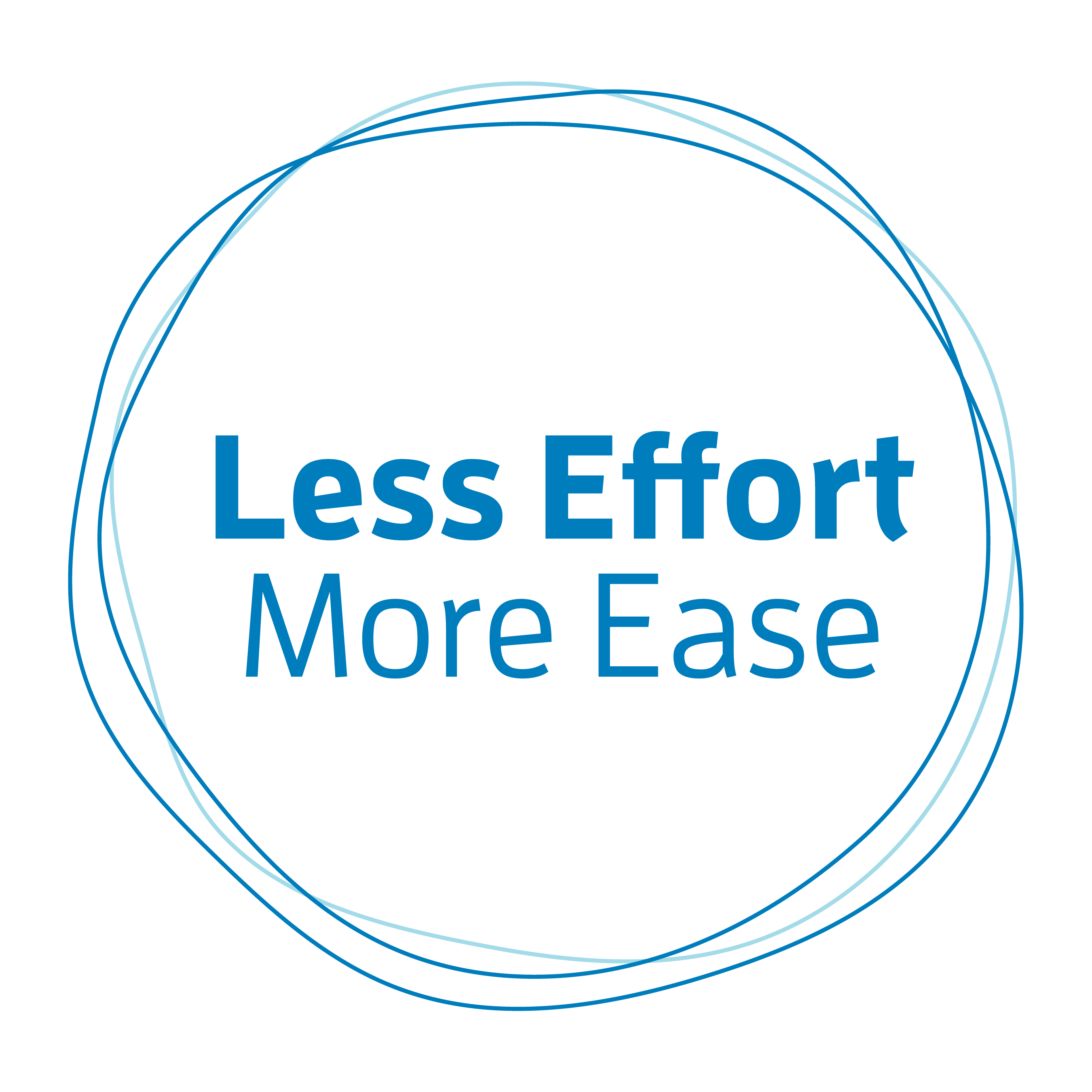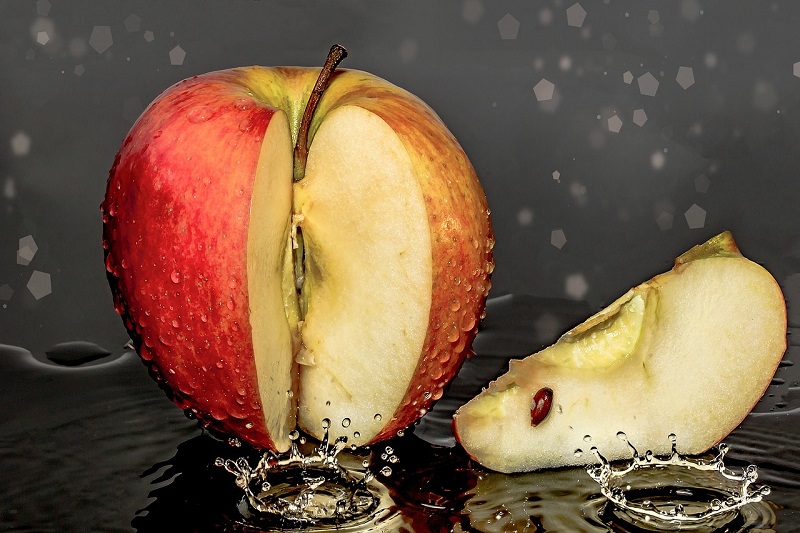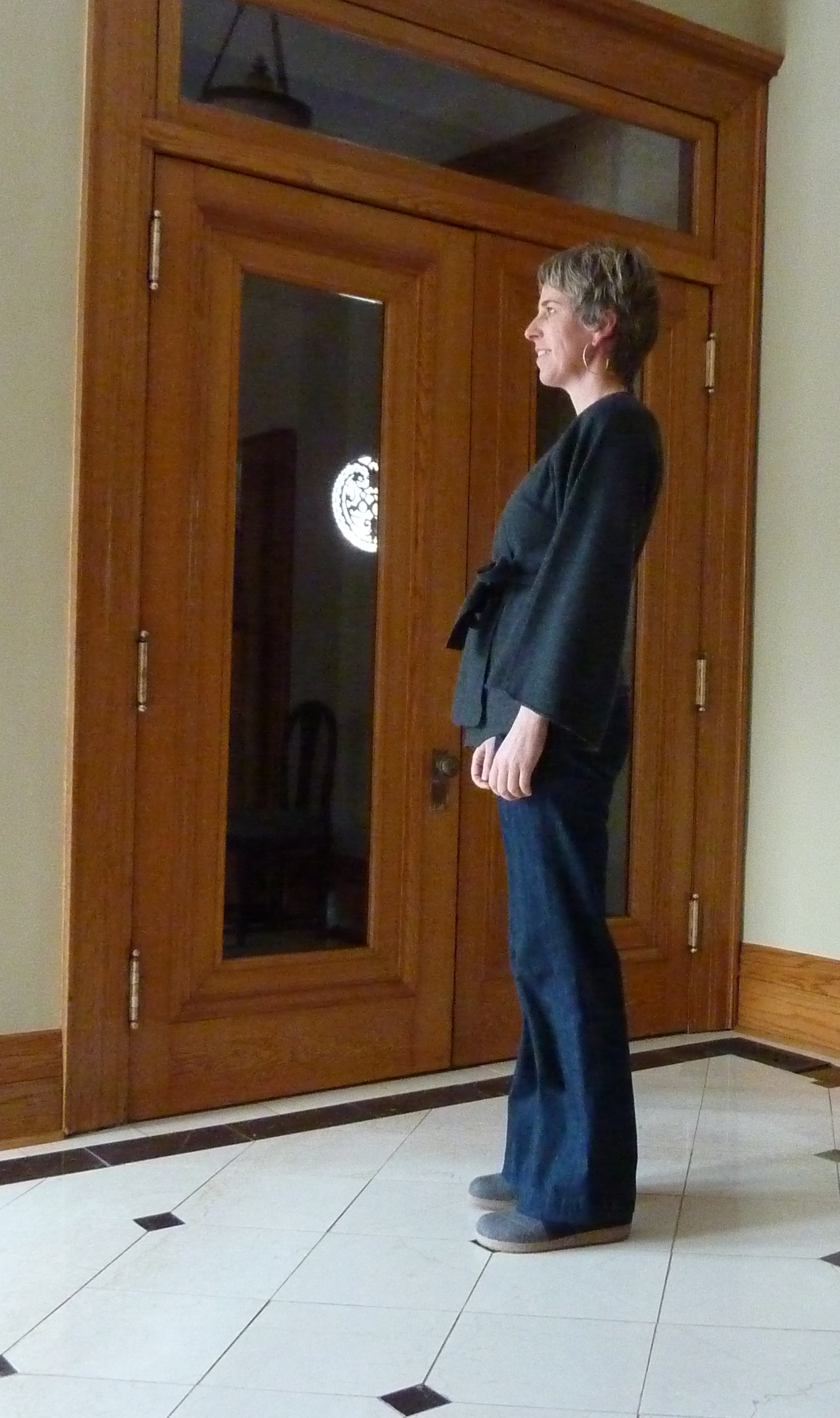If you find you tend to stand with your hip joints pushed forward and your upper back thrown backward you are in good company.
As you observe others you will see how ubiquitous this detrimental habit is.
Realize that seeing others tends to subconsciously reinforce this is the way to stand. But now that you know otherwise you can be more mindful and attentive to yourself and make some other choices.
Another reason this habit of standing is so detrimental is that with your upper back thrown backward your weight is situated over the back or nerve part of the spine, not the front or support part of the spine.
Look at the side view of the skeleton below. Your spine starts at your tailbone located a little higher than your sitting bones and between them. It curves its way all the way up to the level of your ears. Pay special attention to how thick the spine is at the lower end (right above the pelvis) at the level of the lower back and abdomen.
If you run your hand up and down your friend’s back you are feeling the back part of her spine. It is important to realize that this is only part of the spine.
Your spine has two main functions—support (discs) and communication (spinal cord and nerves). The discs are located toward the front. The spinal cord and nerves run along the back.
In the illustration, the skeleton is standing balanced with the weight transferred down through the front part of the spine (this is the vertical line)
If you are standing with your hip joints pushed forward and your upper back thrown backward your weight is situated over the back or nerve part of the spine. Ouch!
You want your weight centered over the support or front part of the spine. For this reason, when I imagine my spine I imagine the support part (the front part). Because the front part of my spine is actually more or less in the middle of my body (look at the vertical line in the illustration again) I like to imagine it like the core of an apple (albeit a slightly curvy one!). I let my weight transfer down through my apple core instead of thinking of the spine like a rod along my back.

In this previous post, I introduced the term body map—we all have in our mind maps of our bodies and how they work. These body maps include size, shape, and function.
What is important to realize is that you will typically move (and sit and stand) in accordance with how you think you are structured, even if your thinking is inaccurate. If your body map is faulty, movement and consequently posture suffers.
So to help correct your body map of your spine think of it more like the core of an apple, not like a rod along your back.
How you think does affect how you move, sit and stand.
Picture credits: Fig 1: How to Learn the Alexander Technique by Barbara and William Conable






